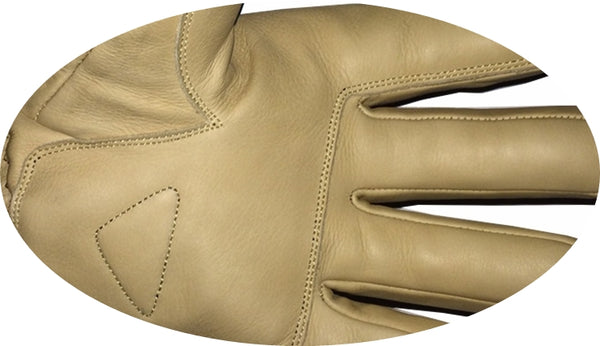Leather for ski gloves: the different methods for making
There are many specific methods for tanning leather, but most can be divided into three methods: Mineral-tanning (using Chromium), Aldehyde-tanning and Vegetable-tanning.

Chrome Tanning
This method uses chromium mineral salts. It is by far the most common and popular tanning method. It produces soft and consistent leather, in terms of color and texture, and is faster to produce. Before it is colored, it is pale-blue (“Wet Blue”) in color and often has a very strong chemical smell that remains in the final product.
Aldehyde Tanning
This method is often advertised as "chromium-free.” It is commonly used in car interiors and shoes. Before it is colored, it is very pale, almost white. Aldehyde tanning is also controversial as it uses the chemical Formaldehyde, which requires strict manufacturing control to avoid serious problems from its toxic nature.
Vegetable Tanning
This method is chemical-free. It is considered the craft or artisanal method of making leather and takes much longer to make (30-60 days), which makes it more expensive to produce. The process utilizes tannic acids found naturally in the barks, branches, and leaves of plants and trees. Before it is colored or dyed its' natural organic appearance is somewhere between light brown and beige. It has a natural, woody, Earthy smell. (The “leather” smell). Coloring this type of leather changes it’s texture, so to get the softest, best smelling leather it needs to be left in it’s natural state.
More information

